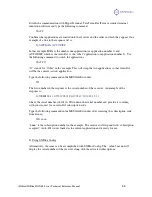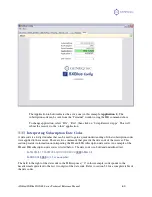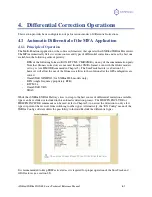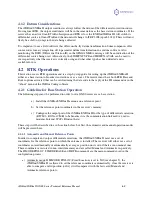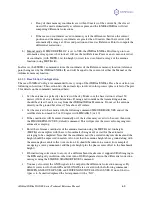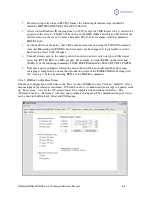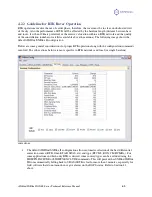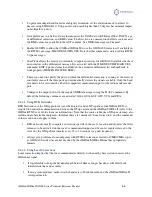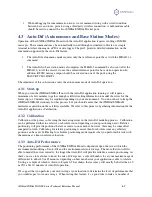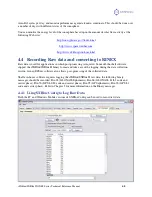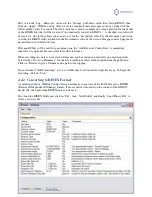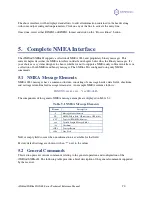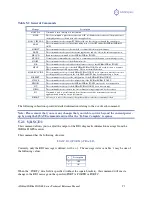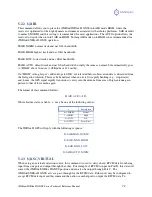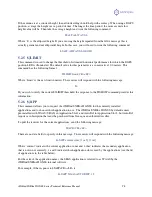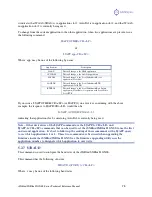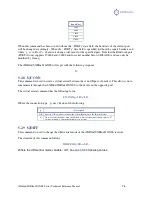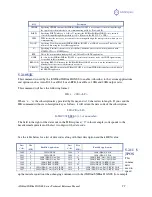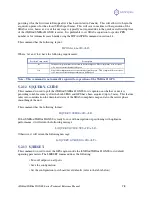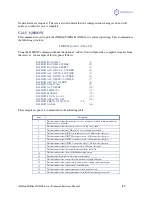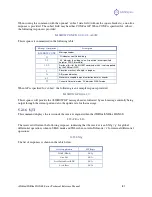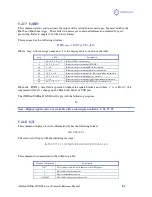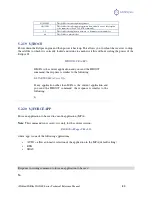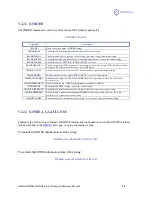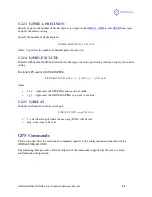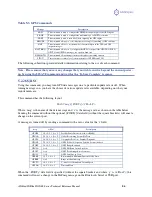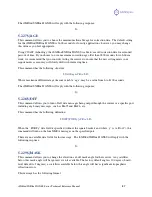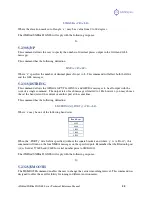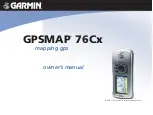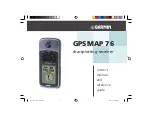
iSXblue/SXBlue II GNSS Series Technical Reference Manual
73
configure the iSXBlue/SXBlue II GNSS to output RTCM data on the current port from data input on
another port, issue the following command:
$JASC,VIRTUAL,r<CR><LF>
To configure the iSXBlue/SXBlue II GNSS to output RTCM data on a specific port from RTCM data
input on another port, issue the following command:
$JASC,VIRTUAL,r,PORTy<CR><LF>
Where the message status variable, ‘r’, may be one of the following:
r
Description
0*
OFF
1
ON
And the port number variable “y” can be A, B or C for the Bluetooth, Serial and USB respectively.
The iSXBlue/SXBlue II GNSS will reply with the following response:
$>
5.2.4
$JALT
This command turns altitude aiding on or off for the iSXBlue/SXBlue II GNSS. When set to on, altitude
aiding uses a fixed altitude instead of using one satellite’s observations to calculate the altitude. The
advantage of this feature, when operating in an application where a fixed altitude is acceptable, is that the
extra satellite’s observations can be used to betterment of the latitude, longitude, and time offset
calculations, resulting in improved accuracy and integrity. Marine markets, for example, may be well
suited for use of this feature.
This command has the following layout:
$JALT,c,v[,GEOID] <CR><LF>
Where feature status variable, ‘c’, and threshold variable, ‘v’, may be one of the following:
The
SXBlue II
GPS
will reply
with
the following
response:
$>
c
Description
NEVER
This is the default mode of operation where altitude aiding is not used.
SOMETIMES
Setting this feature to SOMETIMES allows the receiver to use altitude aiding, dependent
upon the PDOP threshold, specified by ‘v’
ALWAYS
Setting this feature to ALWAYS allow the receiver to use altitude aiding regardless of a
variable. In this case, you may specify the ellipsoidal altitude, ‘v’ that the receiver
should use. Optionally, if you specify the ‘,GEOID’ field, the receiver will use the
GEOID as its reference.

